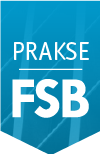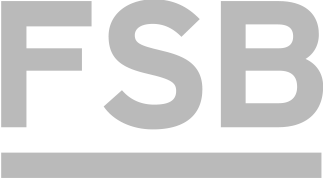International Exchange
Course details
Student Mobility > Programmes and Courses > Courses in English > Course detailsMeasurements in Aircraft Engineering I
- Teaching:
- ECTS:
- Level:
- Semester:
- Prerequisites:
- No prerequisites.
- Load:
Lectures Exercises Laboratory exercises Project laboratory Physical education excercises Field exercises Seminar Design exercises Practicum 30 15 0 0 0 0 0 0 - Course objectives:
- Introduction of students with measurement infrastructure and metrology principles. Dimensional and form measurements in aircraft engineering. Developing measurement skills. Training students to apply statistical methods in metrology. Developing students" critical thinking based on scientific knowledge.
- Student responsibilities:
- Grading and evaluation of student work over the course of instruction and at a final exam:
- Active participation during lecturers or exercises - 10% Exam from laboratory exercises - 30% Final exam - 60%
- Methods of monitoring quality that ensure acquisition of exit competences:
- In order to have continuous monitoring of quality performance of the Course an anonymous, simple and quick questionnaires of student"s opinion will be preformed by use of module Moodle application Question. The readiness of students to other forms of engagement will be analyzed (research, discussion, development projects, etc.) At the end, the quality of Course will be assessed through University questionnaire that student fulfills online, through the ISVU system, in order to evaluate work of teachers and the attractiveness of topics.
- Upon successful completion of the course, students will be able to (learning outcomes):
- After successfully completing the course, the student will be able to: Interpret fundamental metrological concepts and methods. Competently perform measurements in the field of dimensional metrology. Evaluate measurement system capability. Estimate measurement uncertainty. Evaluate measurement results based on critical thinking and intellectual honesty.
- Lectures
- 1. Brief introduction to history of measurements. Basic notions in metrology.
- 2. Elements of measurement procedure. Measurement conditions. Measurement errors.
- 3. Measurement result. Result correction. Measurement uncertainty.
- 4. Repeatability and reproducibility. Measurement system analysis.
- 5. Measurement equipment calibration. Measurement inter-comparison. Mutual recognition arrangement. EA and MRA.
- 6. Length measurement. Development of length standard. Types of standards. Traceability.
- 7. Form and position tolerances. Roughness and cylindricity.
- 8. Testing straightness and flatness.
- 9. Roughness of technical surfaces.
- 10. Surface topography. 3D roughness parameters.
- 11. Geometrical optics. Spherical diopters and lenses.
- 12. Optical microscopy. Coherent light sources and their characteristics.
- 13. Nanometrology determinants. Laser interpherometers.
- 14. Basic principles of tri-coordinate measurements.
- 15. Methods and equipment for large object measurements.
- Exercises
- 1. International system of units.
- 2. Abbe measurement error. Error induced with temperature differences.
- 3. Example of calculating measurement uncertainty using GUM and Monte Carlo simulations.
- 4. Determining Gage study R&R using "long" and "short" method.
- 5. Procedure for length standard calibration. Calibration of hand equipment of length measurement. COLLOQUIUM.
- 6. Demonstration of characteristics and purpose of different calibration blocks for length measurements.
- 7. Examples of roughness testing.
- 8. Example of straightness and flatness testing.
- 9. Standards and equipment for roughness determination. Example of roughness determination.
- 10. Surface micro- and macro-geometry. COLLOQUIUM.
- 11. Example of refraction index determination.
- 12. Examples of measurements using transmission and reflection microscope.
- 13. Example of measurements using laser-based measurement system.
- 14. Example of profile determination using tri-coordinate measurement apparatus.
- 15. Example of application of theodolite in large object measurements. COLLOQUIUM.
- Compulsory literature:
- B. Runje, G. Baršić, V. Šimunović, "Theory and technique of measurements" the basis for exercises, FMENA, 2015.
F.T.Farago, M.A.Curtis, "Handbook of Dimensional Measurement", Industrial Press Inc. New York, 2012.
D.M.Anthony, "Engineering Metrology", Pergamon Press, New York, 1986.
"Metrology - in short " 3rd edition, EURAMET e.V. 2008, ISBN 978-87-988154-5-7, 2008. - Recommended literature:






